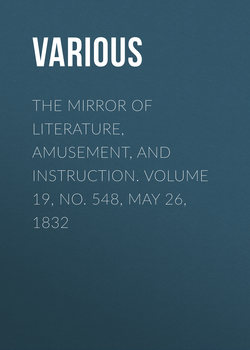Читать книгу The Mirror of Literature, Amusement, and Instruction. Volume 19, No. 548, May 26, 1832 - Various - Страница 4
Spirit of Discovery
ОглавлениеPOTTERY. 3
(Continued from page 284.)
China
The name China, by which the ware that I am about to describe is known in England, shows sufficiently the country from which we have received it. The term porcelain, which is applied to it on the continent of Europe, is Italian; porcellana being in that language the name of those univalve shells forming the genus cypraea of the conchologist, which have a high arched back like that of the hog (porco, Ital.), and are remarkable for the white, smooth, vitreous glossiness of the surface about the mouth of the shell, and sometimes, as in the common cowry (Cypraea moneta), over the whole surface.
The introduction of the Chinese porcelain soon excited a strong desire in the various countries of Europe to imitate it; but as the establishment of experimental manufactories for this purpose required the expenditure of considerable sums, and at a risk beyond the means of private persons, it is chiefly to the munificence of the sovereigns of Europe that the public are indebted for the first steps made in this interesting art. In Germany, chemists and mineralogists were set to work; the latter to seek for the most appropriate raw materials, and the former to purify and to combine them in the most advantageous proportions. The French government adopted the very sensible plan of instructing some of the Jesuit missionaries, who at that time had penetrated to the court of China, and into most of the provinces of that empire, to collect on the spot specimens of the materials employed by the Chinese themselves, together with the particulars of the process. The precise result thus obtained is not known; for as a considerable rivalry existed between the different royal manufactories of this ware, the most valuable information would of course be kept as secret as possible.
Of the European manufactories of porcelain, that established at Miessen, near Dresden, by Augustus Elector of Saxony and King of Poland, in the early part of the 17th century, was the first that aspired to a competition with the Chinese. In compactness of texture and infusibility it was reckoned perfect a hundred years ago. It is not quite so white as some of the French and English porcelains, but is inferior to none in its painting, gilding, and other decorations.
3
By Mr. A. Aikin, in Trans. Soc. Arts.
